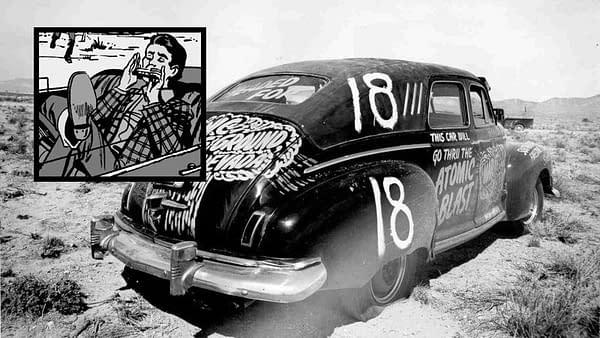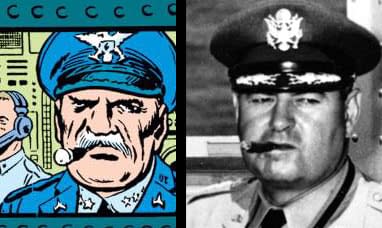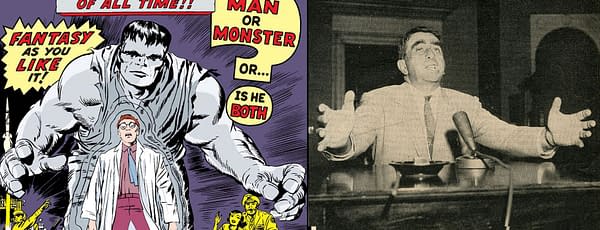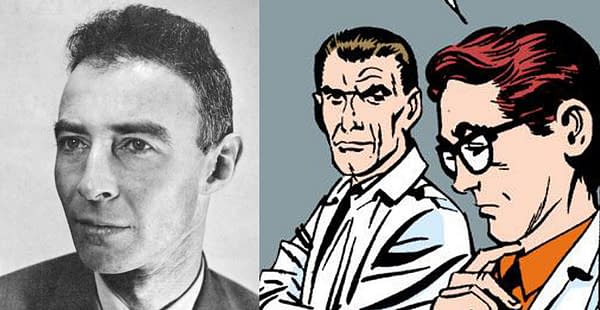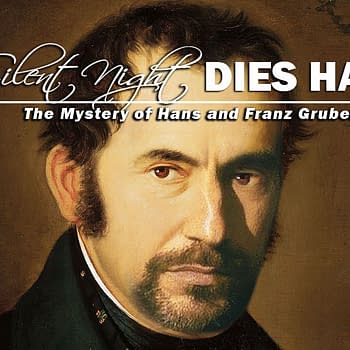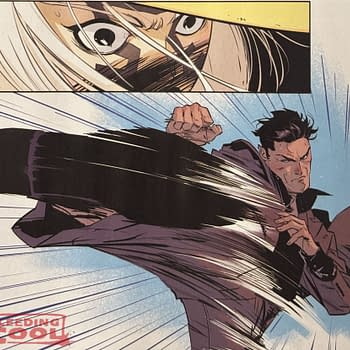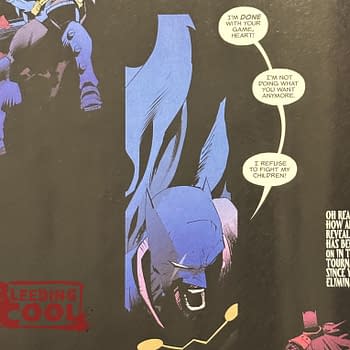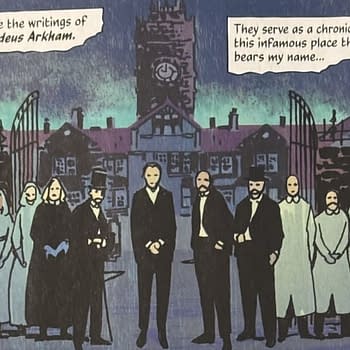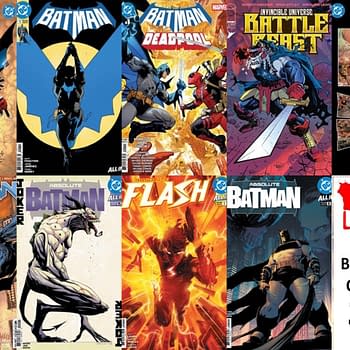Posted in: Comics, Recent Updates | Tagged: #marveldeclassified, marvel declassified
Marvel Declassified 1: This Car Will Go Through the Atomic Blast
I've spent a long time thinking about where to start this complicated, strange story that I stumbled across several months ago while researching the true origins and inspirations of Marvel's Black Panther. It's a story that rather neatly unfolds step by step across the chronology of 1950s through 1960s America, and beyond. It's also an incredibly complicated tale that has dozens of surprising twists and turns during that era, as the world warily feels its way through the strange new war-driven science of the atomic age, and then onto the just as strange, just as complicated ideology-driven world of the 1960s.
In talking this over with my colleague Rich Johnston, he has suggested I start with the biggest punch. I'm a comics history nerd, and I tend to think all the unknown twists and turns of it are amazing, but I find I don't have a good nose for what others will think of a particular revelation. Rich's reaction to what I've been explaining to him about this matter over the past several months has helped clarify the gravity of it for me. He's at turns been amazed and delighted by it. There are bright spots here, but also dark ones too. When I hit one particular dark moment in the research that so shocked me by its circumstance that I didn't mind admitting to him that I nearly wept over what the creators involved must have thought of it (or whether they were told the specifics of it, or what they'd been told), he told me, "No tears. This is important."
I know how that sounds. But you'll recognize the moment when we get to it.
For whatever else this is, this particular part of the story is important. I don't know if the following is truly the biggest punch out of all of it, but it is indeed explosive. So be it: let's set off the bomb.
The story outlined in Incredible Hulk #1 by Stan Lee and Jack Kirby in 1962 from Marvel Comics is a rather straightforward fictionalization of the actual events of the development of America's atomic bomb program, and it's closely based on key figures involved in that program. Although much of the background of the story matches a range of elements, the gamma bomb itself is a stand-in for the hydrogen bomb. The story represents the split within the scientific community over the development of the hydrogen bomb, with the lines drawn in the comic exactly as they were in real life: Edward Teller vs. Robert Oppenheimer. In particular, the story brands Robert Oppenheimer as a traitor and illustrates and explains Edward Teller's often volatile personality.
General Curtis LeMay is perhaps the easiest to identify in this story. He's probably a more over-the-top version of General Ross than the fictional character himself, and he had the same job: the cigar-chomping, belligerent General LeMay was the Deputy Chief of Air Staff for Research and Development for America's nuclear arsenal. As such, he oversaw the bomb tests at Bikini Atoll in 1946, and others.
Alan Lomax is likewise obvious here, to the point where Kirby clearly referenced a photo of him at one point in Incredible Hulk #1 for the character Rick Jones (and note that the technology Rick Jones is using there looks quite a bit like Lomax's turntable). Lomax was a counterculture figure wandering the country in search of folk and jazz music to record. Lomax also has a rather lengthy FBI file, which doesn't seem to have much bearing on our storyline here, at a glance. In real life, Lomax is an incidental figure in this matter — his inclusion appears to be based solely on his friendship with Los Alamos scientist and chairman of President John F. Kennedy's Science Advisory Committee Jerome Wiesner.
Edward Teller, the theoretical physicist known as "the father of the hydrogen bomb", is Bruce Banner in this storyline. Teller was well known for his bouts of temper when provoked, or during arguments. He could be kind one moment and then explode with rage at some small provocation. Also immortalized in pop culture as Doctor Strangelove by Stanley Kubrick, Teller was focused on the development of the hydrogen bomb to the exclusion of all else and could argue about the issue forcefully. Nobel laureate Isidor I. Rabi said of Teller:
"He is a danger to all that is important. I do think it would have been a better world without Teller. I think he is an enemy of humanity."
The cover blurb of Incredible Hulk #1, "Is he man or monster, or… is he both?" is exactly how Teller was viewed, on multiple levels.
Robert Oppenheimer is the most fascinating part of all of this. The theoretical physicist known for his role as "the father of the atomic bomb" in the Manhattan Project, Oppenheimer was shaken by witnessing the Trinity Test, the first atomic bomb detonation which took place in New Mexico in 1945. He opposed the development of the Hydrogen bomb, and this eventually led J. Edgar Hoover to produce evidence of what were said to be Oppenheimer's Communist sympathies.
It seems clear that Kirby based the character of the scientist Igor on this photo of Oppenheimer.
Oppenheimer was called to testify in front of the House Un-American Activities Committee. Edward Teller's 1954 testimony in this matter was less than supportive:
"In a great number of cases, I have seen Dr. Oppenheimer act—I understand that Dr. Oppenheimer acted—in a way which was for me was exceedingly hard to understand. I thoroughly disagreed with him in numerous issues and his actions frankly appeared to me confused and complicated. To this extent I feel that I would like to see the vital interests of this country in hands which I understand better, and therefore trust more. In this very limited sense I would like to express a feeling that I would feel personally more secure if public matters would rest in other hands."
This finished Oppenheimer as an active participant in the scientific community in the United States. However, Oppenheimer was an eloquent speaker and writer, and he eventually continued to press his point about the dangers of nuclear weapons — which makes his role in Incredible Hulk #1 all the more fascinating.
The comic very clearly brands Robert Oppenheimer a traitor. He purposefully fails to stop the bomb test when Banner runs out onto the test site to save Rick Jones. He then contacts his Communist handlers and attempts to steal the Gamma Bomb plans from Banner's quarters on base.
There are more matching details in the issue, and I can also tell you that this is not the only Marvel comic book in which Robert Oppenheimer is written in as a failure to his country. I even have a strong suspicion as to why, which we'll get to soon.
In the meantime, you can keep up with all of Bleeding Cool's Marvel Declassified material here.


